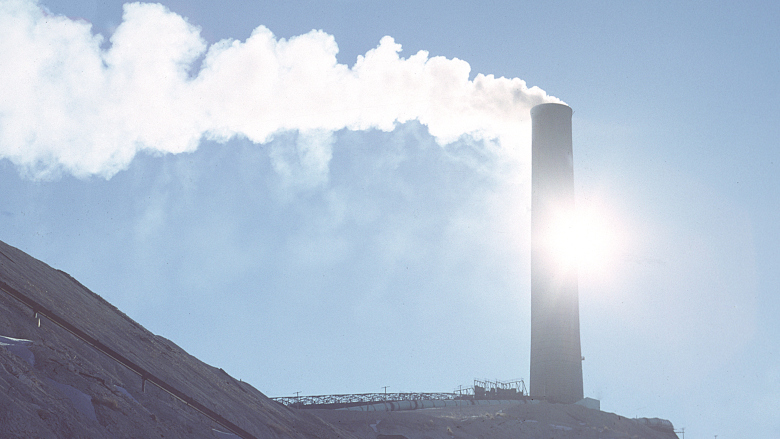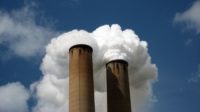The U.S. Environmental Protection Agency released the final version of its “good neighbor plan” rule to limit nitrogen oxide emissions from power plants and industrial sites in 23 states. The rule sets new requirements for cement and steel producers that industry groups say could further raise construction materials costs, although EPA walked back some more contentious provisions proposed last year.
Agency Administrator Michael Regan announced the final rule March 15, saying it would reduce NOx pollution by about 70,000 tons in the 2026 summer ozone season, with emissions for power plants in 2027 estimated to be half of the 2021 emission level.
The rule specifically targets “good neighbor” requirements in the Clean Air Act, covering pollution that forms smog in downwind states.
The reductions in NOx pollution would have far-ranging benefits to the environment and public health, Regan says. In 2026, EPA projects the rule would prevent about 1,300 premature deaths and cut asthma symptoms by 1.3 million cases. The agency estimates the benefits would have an annual net economic benefit worth $13 billion per year through 2042. Reducing smog would also help protect sensitive ecosystems.
“The public health and environmental benefits of this rule are tremendous,” Regan says.
The rule sets emissions limits for various industrial purposes and requires monitoring to ensure compliance with the control requirements. Regan says the pollution control approaches are cost-effective ones the power sector and others have traditionally used, and allow businesses “to make informed investment and planning decisions” that preserve their ability to deliver reliably and affordably.
However, the rule has drawn opposition from some sectors it covers. After proposing the “good neighbor” rule last year, EPA says it received more than 112,000 comments on the plan. The Associated General Contractors of America warned the original proposed rule could impact the availability and cost of power and materials needed to meet Biden administration infrastructure goals. Brian Turmail, AGC’s vice president of public affairs and strategic initiatives, tells ENR that officials should reconsider their approach for the rule.
“Despite the fact the president regularly touts the need to rebuild and improve America’s infrastructure, the Biden administration seems committed to doing everything in its power to make it difficult and increasingly expensive to procure the energy and materials needed to build our future,” he says.
Cement and Concrete
Regan says EPA integrated feedback from the comments into the final rule “so that it’s flexible, innovative and transparent.” For cement production, EPA did remove a proposed source limit cap on daily emissions from individual plants that had been in the original version. Sean O’Neill, senior vice president of government affairs for the Portland Cement Association, said in a statement that the source cap limit would have likely forced many cement plants to cut production or shut down entirely.
“The rule—based on flawed information—would have been regulatory overkill for many U.S. cement manufacturers, as many cement plants already have state-of-the-art emissions-control technologies in place to comply with stringent government regulations,” O’Neill says.
EPA also established provisions allowing cement producers to use continuous emission monitoring systems data instead of the semiannual performance tests it had originally proposed to exclusively require. But the agency declined to alter any of its emissions limits for different types of kilns used for cement production included in the proposed rule.
 EPA kept its proposed cement kiln emissions limits in the final rule.
EPA kept its proposed cement kiln emissions limits in the final rule.
Iron and Steel
Steel producers, including Nucor Corp. and U.S. Steel Corp., along with steel sector groups, also provided feedback on EPA’s proposed rule. They convinced officials to re-evaluate the technical feasibility and cost effectiveness of emissions controls for production sources. As a result, EPA opted to not yet finalize proposed emissions limits for blast furnaces, BOFs, ladle and tundish preheaters, annealing furnaces, vacuum degassers, taconite kilns, coke ovens and electric arc furnaces.
However, EPA did still opt to set emissions control requirements for reheat furnaces that emit 100 tons or more of NOx per year. Under the final rule, producers with reheat furnaces must use low-NOx burners or equivalent low-NOx technology that achieves at least a 40% reduction from baseline NOx emissions.
Kevin Dempsey, president and CEO of the American Iron and Steel Institute, said in a statement that the steel sector is considering how to best address the requirements.
“Our data show that the emission limits for NOx reduction set on reheat furnaces will be exceedingly costly for the steel industry to meet under this new rule, and will have no meaningful impact on ozone attainment in downwind states,” Dempsey says.
The final rule also allows producers to use either continuous emission monitoring systems for iron and steel reheat furnaces, or annual performance tests with continuous parametric monitoring during ozone season.
Despite the challenges to the program, Regan says officials believe they incorporated “all of the safeguards we need to finalize a very legally durable rule.”




